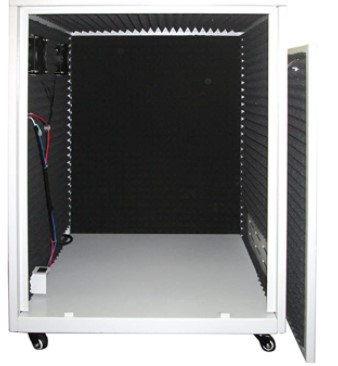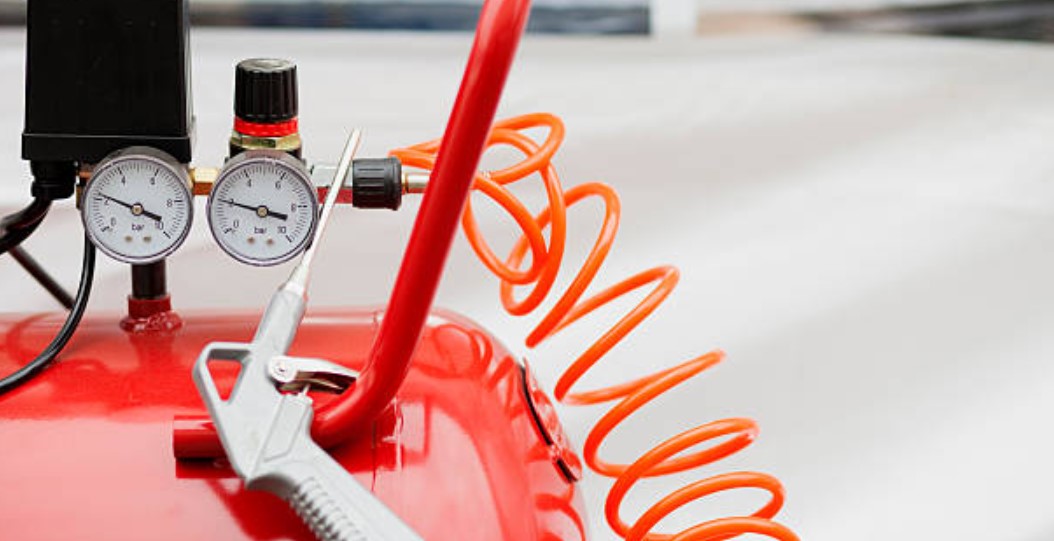How to Make an air Compressor Quiet
Whether gas or electric, an air compressor is invaluable for DIYers; however, the noise can be such a nuisance to you and your neighbors. There are a few factors that make air compressors loud. Typically, the more moving parts it has, the louder it will be. The bigger air compressors tend to be much louder than smaller units, while some manufacturers make air compressors specially designed to be quiet.
So what’s the solution? You can use muffling materials for the loud air intake and the motor. You can also build a soundproof box or shed for your unit or use anti-vibration pads, sound deadening mats, among others. Read further for more details on how to make your air compressor quieter.
What type of air compressors make the most noise?
Air compressors generally produce around 40-90 decibels of sound.
Even in the best conditions, reciprocating air compressors are the loudest at around 85 decibels because of the dual piston pumps. On the other hand, rotary screw compressors are much quieter at about 70-75 decibels because they have soundproofing designs.
Typically, gas-powered air compressors are louder than electric-powered ones because they create combustion and friction from more moving metal parts. Oil-less compressors also tend to be a lot noisier than oiled compressors. The environment around your air compressor also determines how loud it will be. Smooth concrete floors and open spaces tend to amplify any noise, including that of your air compressor.
What part of an air compressor makes the most noise?
The air intake makes the loudest noise in an air compressor. The exhaust follows this. The exhaust is usually loud when it is disposing of byproducts of the compressor.
Air compressors that come in large units are going to be appropriately noisy. Over 80 decibels is usually considered too high; we deem 60-80 decibels as quiet while below 60 decibels is silent. Using units that are between 80-90 decibels can still lead to hearing problems over time. Therefore it’s essential to use earmuffs every time you’re using your air compressor.
ProTip: Size your nail gun properly. A 60-gallon air compressor will be noisier than a small 20-gallon compressor. There is no need for a big noisy compressor if you run low CFM and pressure tools one at a go.
What type of air compressor is the quietest?
An air compressor is quiet if it produces noise of around 60-80 decibels. We also have “whisper compressors,” which are below 60 decibels. The California Air Tools CAT-1P1060S Light & Quiet Portable Air Compressor, is one of the quietest brands at a noise level of 56 decibels. Several types of air compressors in the market and their construction determines how loud the machine is.
Rotary air compressors are known to be the quietest because they have a soundproof design. The rotary screw units are the loudest at 70-75 decibels. Smaller compressors also have less vibrating noise compared to larger units. Oil-lubricated compressors run quieter than non-lubricated units.
To better understand decibels, a normal conversation is around 55- 65 decibels. We recommend Hearing protection from 85 decibels and above.
Ways to Reduce Air compressor Noise.
There are several ways you can fix your noisy air compressor before thinking of replacing it. But first, why are air compressors loud?
- Location – The air compressor will be noisy if you are in the same room as the unit., sometimes even in the same building. The further away you are from your air compressor, the better.
- Source of power – Gas-powered compressors are much noisier compared to electric air compressors because of all the work the gas-powered engine has to do.
- Friction – Positive placement compressors have fewer moving components that are less friction heavy. That would make them quieter than dynamic displacement compressors.
- Capacity and size of an air compressor – Low capacity inflaters use a piston that speeds and heats the compressor inside just as quickly. Therefore, you’ll hear all those parts as they move. Larger units are also much louder than smaller units.
Noisy Air Compressor Troubleshooting Tips
First, allow the air compressor to cool down before troubleshooting it.
- Muffle the compressor intake – The air intake is the loudest part; you can use a rubber hose to extend the air intake and dampens the sound. Intake silencers typically come as an air filter. You should connect one end of the rubber hose to the intake and the other end to the muffler. It should slice off about four decibels off your air compressor. They also come in different sizes, make sure you match the muffler to your air compressor.
The Thread Connector Air Compressor Muffler Filter Silencer is suitable for oil-less air compressors and blocks dust in the air moisture.
Here is a good video on how to DIY homemade air compressor intake silencer.
- Cover your compressor motor with rubber grommets. To reduce vibrations, which are what produce the noise. Use rubber grommets to cover and muffle the motor’s sound and not make an echo, which is sound reflected by surfaces. Rubber is a good sound absorbent. These rubber grommets should be fit to go over the motor.
- Move the air compressor. You will hear less noise if you keep a fair distance between you and the air compressor. You can move it to and outdoor shed or another room instead of the garage. However, other people may still be disturbed by the noise.
- Place the air intake in a quiet box. You can move the air intake where the noise won’t bother you as much. You have two options: move the air intake outside in the backyard or side yard. It is a much better option compared to putting it in the garage. Or, put it in a silencer box on its own.
- Separate the air intake from the air compressor. Take a rubber garden hose and gently place it in the air intake. Be careful not to break the intake.
- Place a bracket or grommet on that end of the hose to keep it firmly in place as the air intake moves and vibrates.
- Run the air hose and power cable to the air compressor and secure this end with grommets or brackets. The more sturdy the air hose is, the less noisy the setup should be.
- Place the air compressor in a silencer box. Encapsulating your electric or oil-less air compressor will make it sound quieter. Make a box to house your air compressor using soundproofing material such as acoustic foam on the walls, floor, and roof. Make a soundproof box according to the dimensions of your unit. The box will also need to be well ventilated to prevent the compressor from overheating. You will also need to weatherproof it for the outside to avoid direct damage from the sun, snow, or rain. You can make a simple one for yourself or pick a suitable one from Amazon.
- California Air Tools SPC03 Air Compressor Sound Proof Cabinet– reduces air compressor noise by 40%

How to make a silencer box
You can make a silencer box for a smaller air compressor using the simple steps below. Remember, the thicker the walls, the more soundproof the box will be.
Things You’ll Need
- Plywood boards of 3/4 inch thick
- Screws
- Wood glue
- Hinges
- A lock system
- Soundproof foam
Steps
- Measure all the sides of your air compressor, including the roof. Account for ventilation space and room for the soundproofing material.
- Cut your plywood with the same dimensions.
- Using super-strong wood glue, attach all the pieces and leave one side open to act as the door. Once it dries, check for any gaps and seal them.
- On the open front side, attach the door to the rest of the box by screwing two hinges and the opposite side’s lock system.
- Glue the studio foam on all sides of the inside of the box. You can make it as thick as you desire.
- Screw four 4-inch stilts or furniture pads on the bottom corners to reduce vibration through the floor.
- Drill two holes. One at the top for ventilation to prevent overheating and the other on the side for cabling and wires.
- Using sound blankets- Sound blankets have an acoustic cover that reduces noise produces by air compressors. The sound gets louder when it reflects off of surfaces. If you store a huge air compressor that you cant move, place sound blankets on the walls around it and the floors to muffle the noise. Here are a couple of ways you can utilize your sound blankets:
- Move the compressor to the corner of the room and place the sound blankets on the two sides of the wall and floor to muffle ground vibrations.
- Place the air compressor in a regular box or cabinet, then cover the box with the sound blanket. Make sure this box has holes for sufficient airflow.
- Cover your air compressor directly with the sound blankets. Do not cover the hoses or the exhaust for the gas-powered air compressors.
You can purchase the Brinmar SBUHD Universal-Fit Air Conditioner Compressor Sound Blanket Wrap will reduce the noise by 40%.
- Vibration pads for air compressor- Installing vibration pads is another way of dampening air compressors’ noise. Some brands come with their own, and some smaller units have rubber feet that work to damp the vibrations. Vibration pads are of rubber or vinyl materials. The softer rubber tends to do better than solid rubber.
These anti-vibration pads from DiversiTech are also anti-slip due to their ribbed surfaces, are oil- resistant, and can be stacked together.
Place the anti-vibration pads under the feet of the air compressor; if you still find that’s not enough to eliminate the noise, try adding a large anti-vibration mat. The Casa Pura Anti-Vibration Pad – Rubber Vibration Isolator Mat will cover the whole underside of the unit.
You can also fabricate one on your own that you can customize.
Things You’ll Need
- Silicone caulk
- Disposable plastic tubs with a dome base.
- Mold release agent such as oil
Steps
- Apply a light coat of any mold release agent on the plastic containers’ inside to prevent the mold
- Pour in the silicone caulk to about as thick and wide as you want the pads to be.
- Please wait for it to dry. It may take up to about seven days to dry.
- Gently remove the mold from the container and place them under the legs of your air compressor.
Other than the usual operating or vibration noise, an air compressor can develop other noises if not correctly maintained. Noises such as banging, clanking, buzzing, squealing could mean there is damage to your air compressor. The soonest you address the problem, the more efficient and long-lasting your air-compressor will be.
These solutions to silence your compressor will allow you to work efficiently, even in the middle of the night, and reduce the risk of developing hearing damage.


